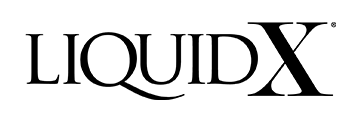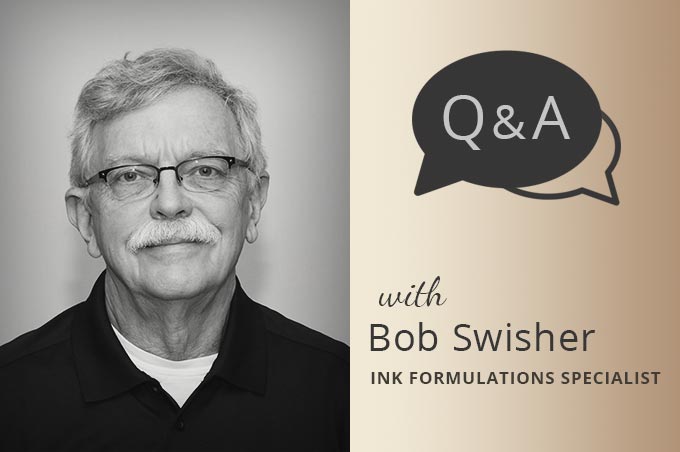Liquid X Printed Metals is at an exciting and innovative time in its evolution, and, according to Dr. Robert (Bob) Swisher, the company has come a long way since its gestation. As the Printed Electronics industry gains traction throughout the world, garnering attention from major players like the healthcare and transportation industries, Liquid X pushes to stay at the forefront of technological advances. With an extensive background in functional inks, a mind geared toward problem-solving, and the support of an energized, intelligent, and well-rounded team, Bob continues to find functional ink solutions to meet a growing customer demand, ultimately giving this Pittsburgh start-up a competitive spot in an ever-growing industry. In this interview, Bob gives readers insight into his career path and role at Liquid X, current projects the team is undertaking, and future implications of exciting new advances within the company.
As Formulations Specialist, what do you do for Liquid X?
We are always trying to get our solutions out to customers. They have requirements for our inks or products that we develop for them. What I do is to tailor our inks to fit their process or their product goal. I essentially modify our formulations to try to adapt it to their needs.
So when a customer comes to Liquid X with a specific substrate and set of performance requirements – you are able to determine the ink formulation best suited for their needs?
Many times, our customers come to us a with a certain substrate already in mind, whether it be a type of fabric, stretchable plastic, etc. If it’s not something we have worked with in the past, it’s hard to make a recommendation or tweak the ink. So our sales team typically requests samples of their substrate. We bring it in-house, and I will test different formulations on that substrate to achieve the desired conductivity, adhesion and any other durability and performance metrics required. If we don’t have a standard ink that fits, then I’ll either come up with a surface treatment for the substrate to make it work or tweak the ink. My role is to find a solution for the customer.
It sounds like you would need an extensive background to be able to think on the fly and continually modify as your position requires. Talk about your journey in this career field and with Liquid X.
Well, degrees get you in the door with some companies. But from then on, it’s continuous learning. I’ve worked in several different areas in coating development. I started with PPG in their fiber glass group and designed coatings to go on glass fibers in order to make it compatible with plastics. You don’t learn that kind of stuff in school – that’s all learning in the industry.
It has been very rewarding and challenging—especially once you develop a product and get it out to paying customers. And with Liquid X, you wouldn’t believe…we’ve come so far…it’s almost amazing how far the company has come in the last year and a half.
Please, fill readers in! What are the current projects you are working on? What has been so impactful in this past year?
With the move to our new lab, we’re able to prototype functional components for our customers now using inkjet, flexographic and gravure printing. This has really accelerated things for us, both from a learning perspective and our product portfolio.
Of course, perfecting our ink development came first. A couple years ago, Chengeto [Gwengo] and Chrissy [Cox] had a breakthrough in our ink development and we were able to do low temperature curing on our polymers, and that allowed us to go to fabrics and plastics.
As for something cool I’m working on now- I just started in the last month or so – is trying to see how we can use our inks and coated fabrics for energy harvesting.
What do you mean by “energy harvesting”?
Getting energy from random places. For example, when two pieces of fabric rub together, like when wearing clothing, it generates electricity, like static. We’re trying to develop a way that we can use that energy. When we press together coated fabrics, they will generate enough electricity to charge a battery or send out a signal. It creates a lot of possibilities that can be very cool, like smart clothing. Or, it could power a GPS so people know where you are, without any external batteries. Basically, you are harvesting energy that is already there. You are collecting energy from movement.
What an awesome discovery! Could this also have “green” implications?
It’s absolutely “green.” The only drawback is that it is low power, so we’re not talking about watts, we’re talking about milli-watts or micro-watts. With the state of electronics now, you can do quite a bit with those low power levels. Right now, it’s more of a research project, we are not ready to take it to customers yet but hope to soon.
Bob’s passion for discovery is infectious and is mirrored by the entire team at Liquid X during this time of growth. The team will continue to experiment with discoveries like energy harvesting, refining its knowledge and expertise before unveiling it commercially. At the same time, delivering on customer projects remains the focal point of the company, and as for Bob, he finds fulfillment in the learning he undergoes daily in the process of tailoring the company’s formulations to adapt to growing industry need.
For information on our products and capabilities, contact us at 412-426-3521.
Bob Swisher – Ink Formulations Specialist
Dr. Robert Swisher is responsible for the formulation and development of particle-free metallic inks at Liquid X. His background includes a Sr. Scientist position at Solvay OLED, in which he was responsible for development of electronic inks for OLED applications. He also previously worked at Plextronics developing OLED inks and applications. Dr. Swisher received a Doctor of Philosophy from University Massachusetts and both MS and BS Science from Bowling Green State University.

